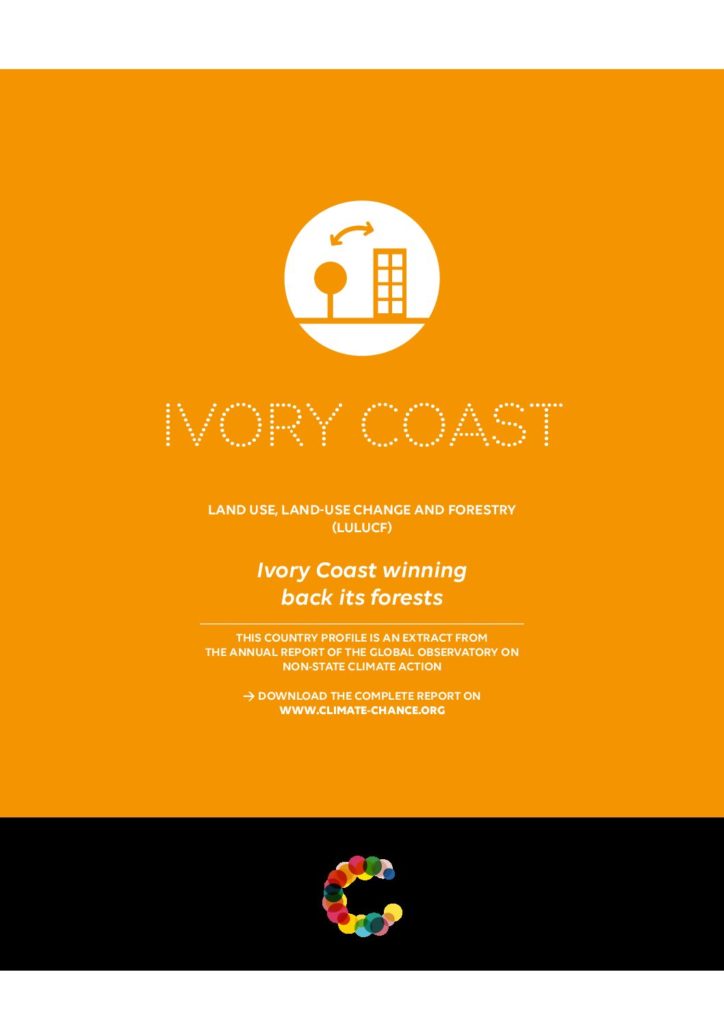
In the country’s Intended Nationally Determined Contribution (INDC), submitted in preparation for the COP 21 in 2015, Côte d’Ivoire signaled its intention to reduce gross GHG emissions by 28% by 2030 compared to 2012 levels. Due to the lack of precise data and measurement difficulties, emissions from land use, land use change and forestry (LULUCF) were not specifically included in the low carbon scenario, but have since become the subject of greater attention at the national and international levels. The interest in this issue is due to the fact that Côte d’Ivoire based its development on agricultural expansion, which is the primary factor behind the loss of 3/4 of the country’s forests: in 2015, the country had 3,401,146 hectares of forests, down from 16 million hectares in 1900.
Forest recovery is a priority for the country, not only in order to meet its international commitments in terms of reducing GHG emissions, but also to preserve local socio-economic and environmental conditions. Furthermore, building and adhering to sustainable strategies is now seen as essential for this developing country, which hopes to continue its strong growth record. NGOs, companies and local communities working in partnership with state bodies are undertaking to help alleviate the catastrophic decline of Ivorian forests. This study on emissions from Côte d’Ivoire’s LULUCF sector provides an overview of the trends and causes, while also highlighting the various operators being mobilized to recover the country’s forests.
